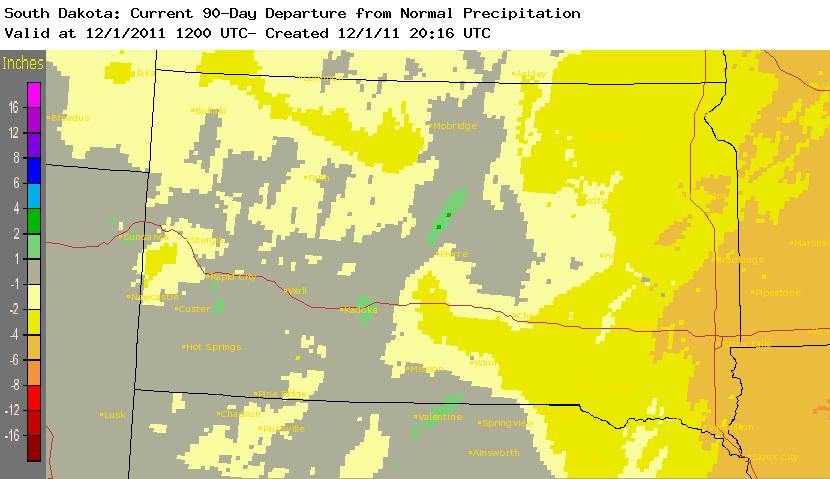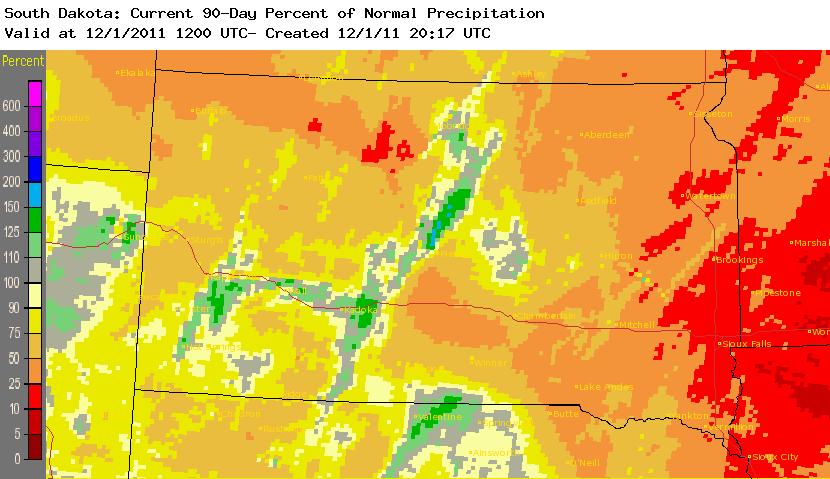
A strong atmospheric river will continue heavy rain over southern California through Friday. The heaviest rainfall is ongoing today in the Los Angeles Basin. Flash and urban flooding is possible. A prolonged heavy snowfall has begun over the Sierra Nevada Mountains and will continue through Friday. Travel will become increasingly difficult over the passes due to snow and strong winds. Read More >
Meteorological autumn (September - November) will end up as being one of the driest on record for many locations across northeastern South Dakota and west-central Minnesota. In fact, several reporting locations have set or tied their all time record for driest autumn periods on record!
The table below shows the Sep-Nov 2011 precipitation totals for several sites across the Aberdeen forecast area, along with the overall ranking, and year and amount of the record (or previous record) dry autumn.
|
Location |
Sept-Nov Precipitation |
Rank |
Record (or previous record) |
Year |
|
Clark |
1.41 |
1st |
1.44 |
1935 |
|
Watertown |
0.93 |
1st(Tie) |
0.93 |
1935 |
|
Artichoke Lake |
1.44 |
1st(Tie) |
1.44 |
1976 |
|
Browns Valley |
1.33 |
2nd |
1.30 |
1980 |
|
Victor 4NNE |
1.31 |
3rd |
0.91 |
1976 |
|
Wilmot |
1.51 |
4th |
1.39 |
1976 |
|
Summit 1W |
1.59 |
4th |
1.20 |
1980 |
|
Wheaton |
1.33 |
4th |
1.19 |
1976 |
|
Sisseton |
1.64 |
10th |
0.88 |
1935 |
|
Aberdeen |
1.47 |
11th |
0.80 |
1964 |
Figure 1 below depicts the 90-Day Departure from Normal Precipitation. Notice that precipitation departures across far eastern South Dakota range from 2.0” below normal to as much as 5.0” below normal!

Figure 2 below depicts the 90-Day Percent of Normal Precipitation. Notice that some areas across far eastern South Dakota and western Minnesota have only seen 5% of normal precipitation.
